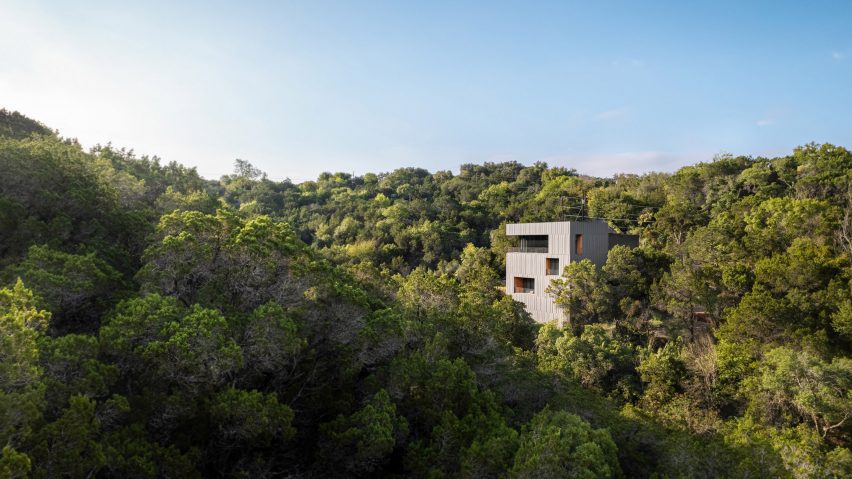
Alterstudio creates Falcon Ledge Residence on a challenging Austin site
Architecture firm Alterstudio has completed a tower-like house in Texas that rises up from a steep, wooded site that was long overlooked "as a possible home site".
Built for a married couple in Austin, the house feels immersed in the wilderness but is, in fact, surrounded by "very ordinary, suburban conditions".
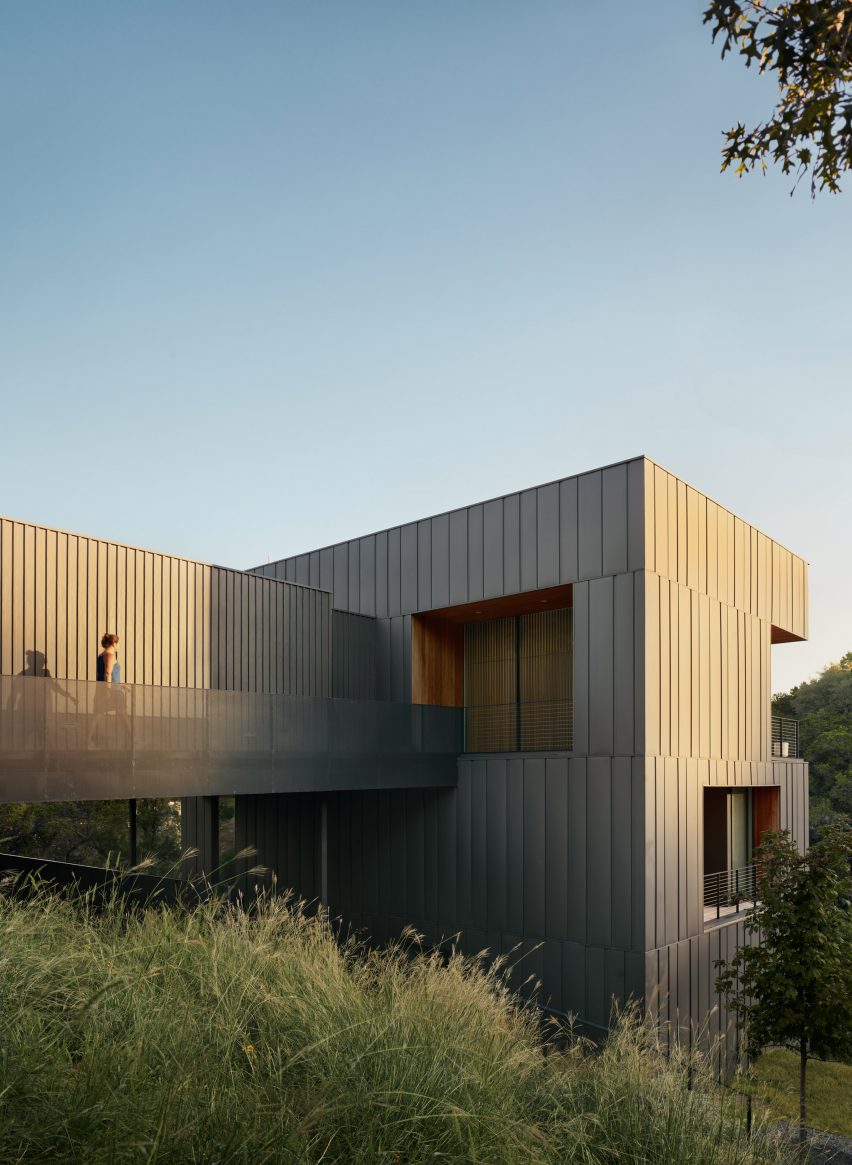
"The opportunity to live simultaneously near the centre of the city and in an isolated refuge presented a powerful circumstance for this family," said local firm Alterstudio.
The opportunity came with challenges.
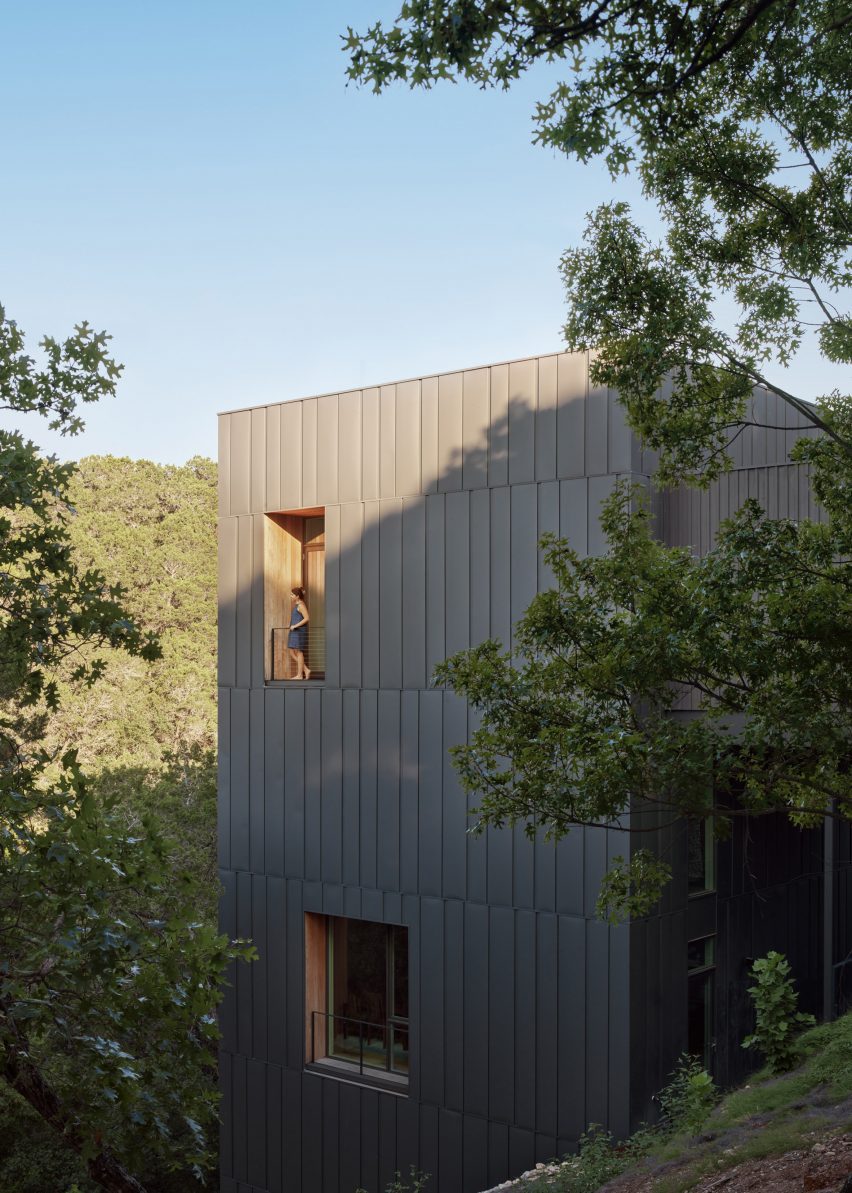
The house rises up from the side of a ravine, on a property that "falls off precipitously directly from the street's curb". The site had long been overlooked as feasible for home construction.
Alterstudio saw potential and let the constraints guide the home's design.

"The form of the building was in many ways determined by the logic of its construction and sequencing, and the result is an unexpected tower rising above the tree canopy," the studio said.
"The project provides a model for an innovative building sequencing that allowed a home to be built on a property long written off as a possible home site."
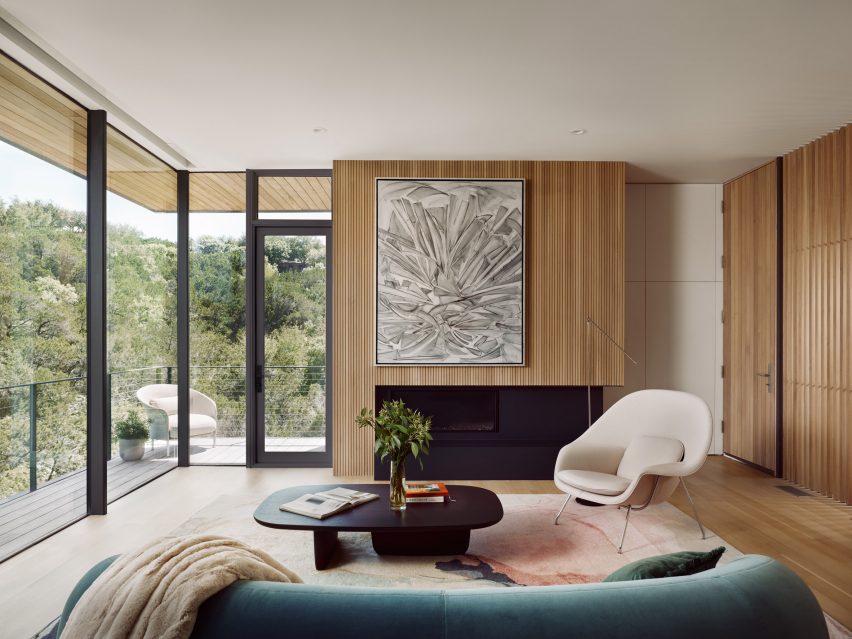
Rising three levels, the 3,813-square-foot (354-square-metre) home is rectangular in plan and form. The building is oriented to take advantage of the "natural views offered up and down the length of the ravine".
Facades are clad in grey-hued, interlocking metal panels. The team cut away portions of the boxy exterior to create balconies, which vary in size.
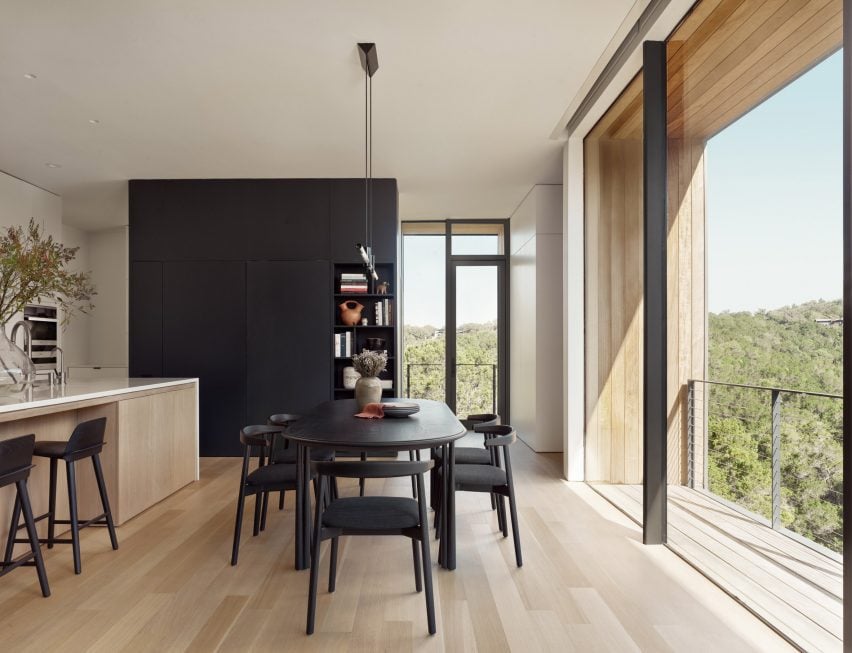
"Deep recesses in the otherwise unmitigated building envelope allow for framed views," the architecture studio said.
To construct the home, the team began with erecting a platform between the building site and the street, where construction staging could take place.
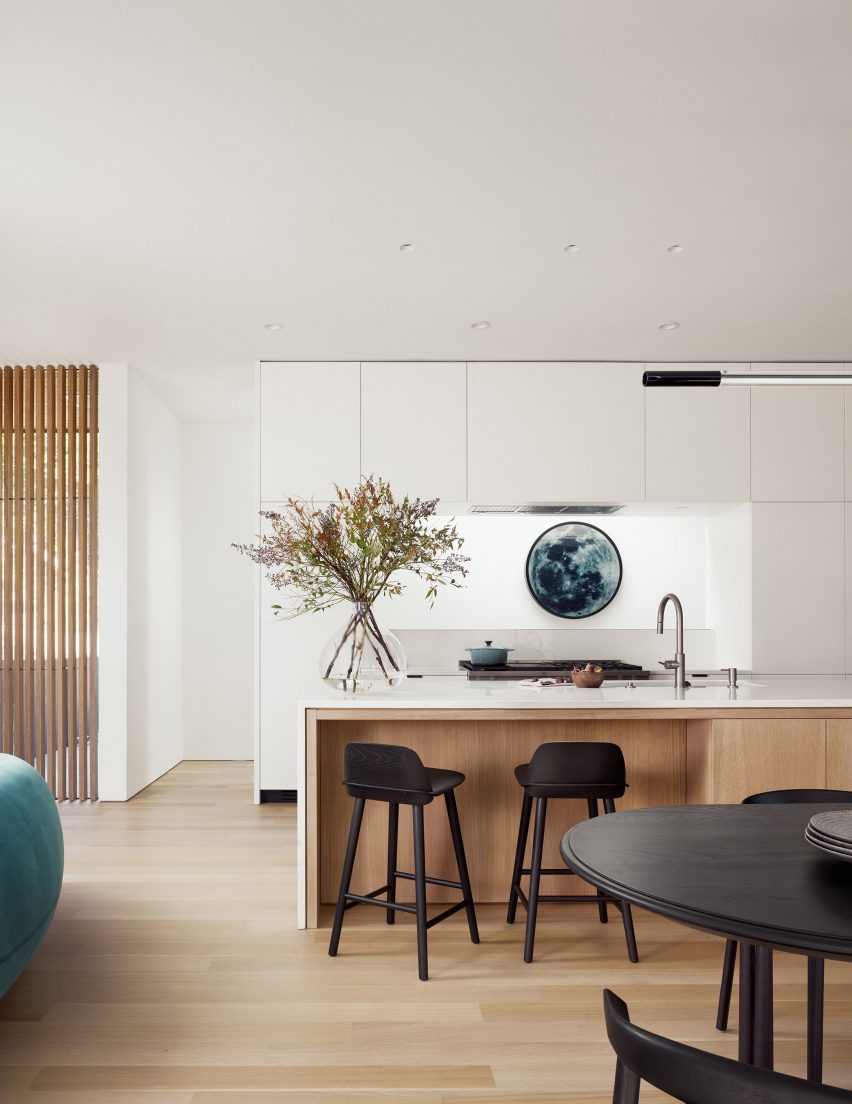
"This later became the garage and bridge to connect to a tall, taught home, organized upside down, with the main living spaces on the top floor, and the private spaces below," the team said.
The top floor contains an open-plan living room, dining area and kitchen, along with a mud room and storage space.
The middle level holds the primary suite, a bedroom and a laundry room.
The bottom level encompasses a family room and two additional bedrooms. A craft room is hidden behind a bookcase in the family room, adding a moment of surprise.
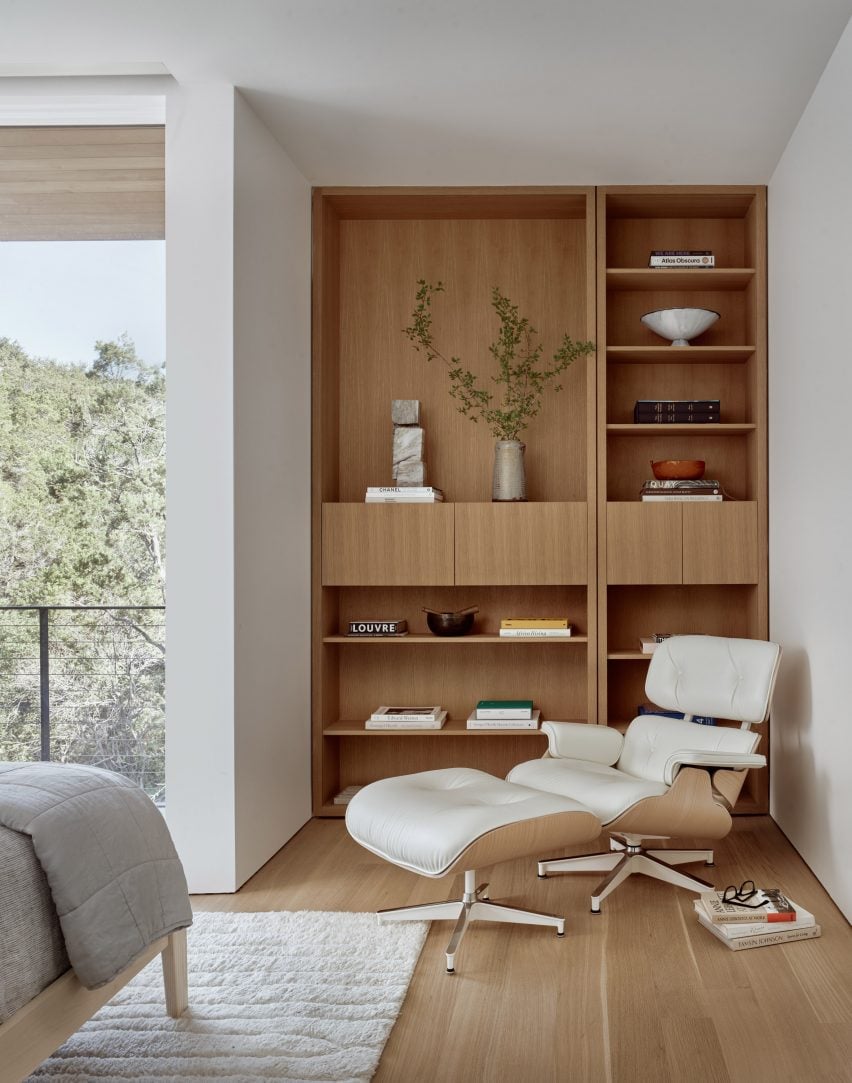
Earthy finishes such as wood and stone are found throughout the dwelling.
White oak was used for flooring, cabinetry veneers, fireplace siding and an entry screen. Garapa wood was used for soffits and for door and window surrounds.
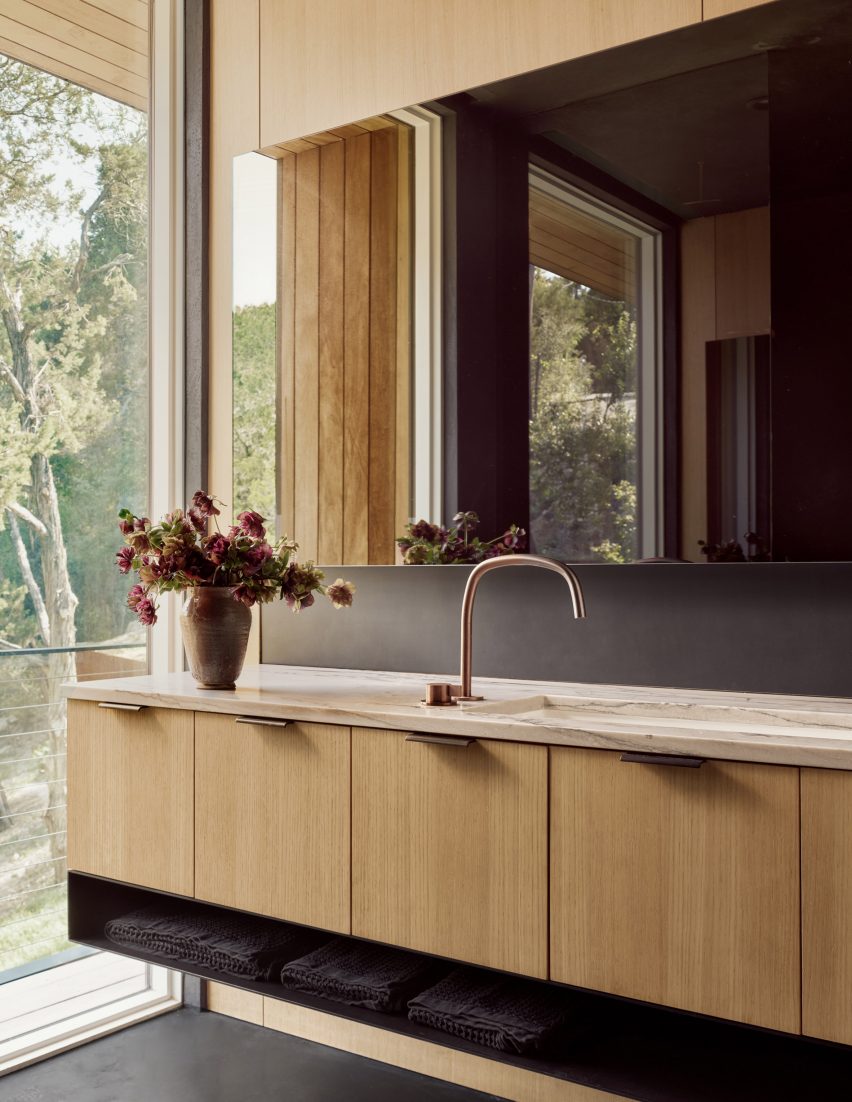
Bathroom finishes include Tadelakt black plaster and Giotto quartzite.
With the natural landscape visible from multiple vantage points, the interior is designed to offer "points of stasis to the compelling and omnipresent out-of-doors".
Other projects by Alterstudio include the renovation and expansion of a 1920s bungalow in Austin. The firm added an angular extension that is clad in black timber and connected to the main dwelling by a glazed corridor.
The photography is by Casey Dunn. The drone photograph is by Alterstudio.
Project credits:
Architecture and interior design: Alterstudio
Architecture team: Kevin Alter, Ernesto Cragnolino and Tim Whitehill (principals);
Haifa Hammami (director of interiors); Matt Slusarek and Elizabeth Sydnor (project architects)
Contractor: Matt Sitra Custom Homes
Landscape architect: Aleman Design Build
Structural engineer: MJ Structures
Mechanical engineer: Positive Energy